
BACK MARKET
Back Market—Rent it before you buy it!
Rental features for electronic devices
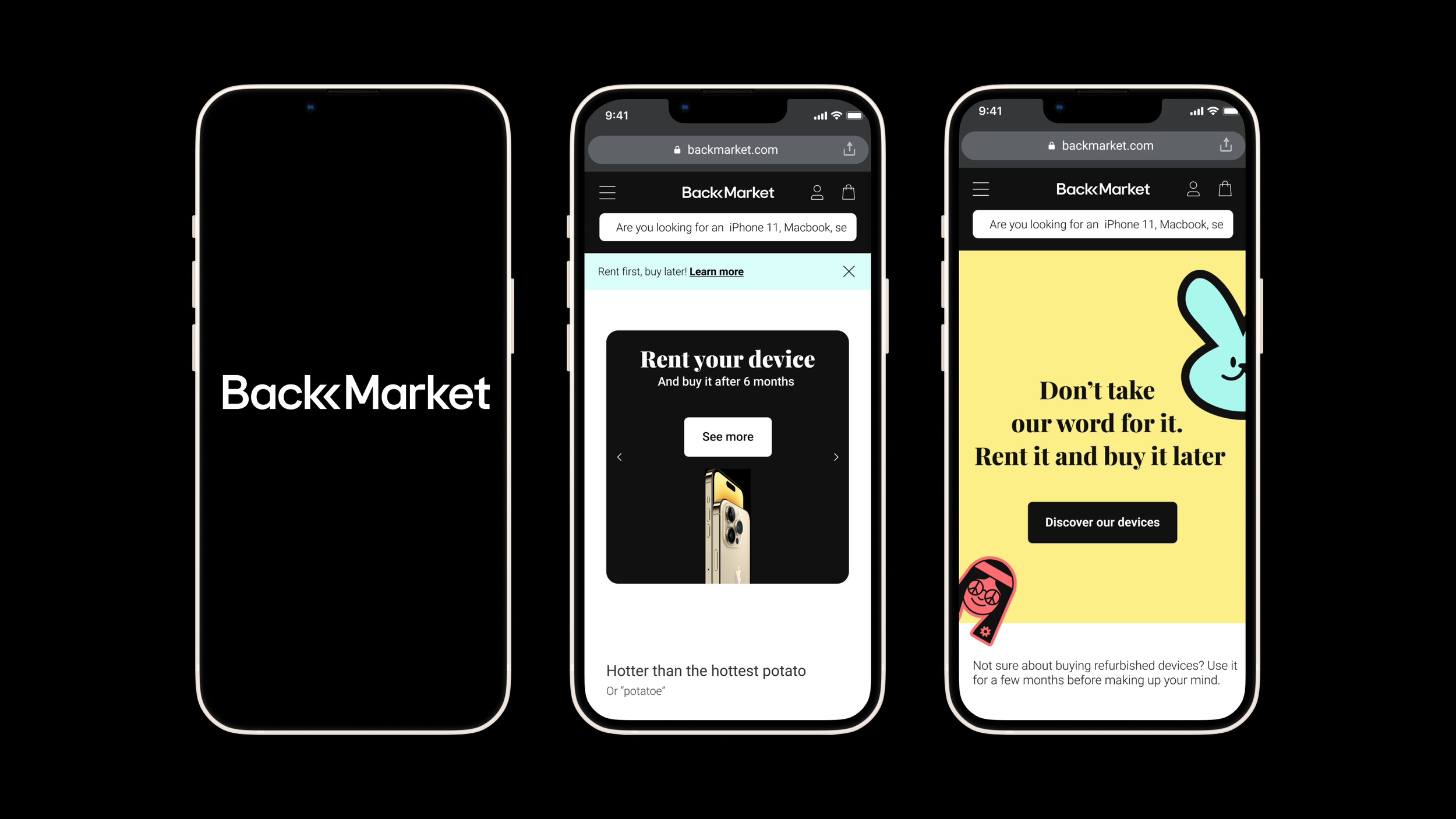
Team: Manon Gustave & Andres Villarreal
Timeline: 2 weeks
Brief: Implement a new feature of device rental
Format: Web Mobile
Back Market is an online marketplace that sells refurbished smartphones, laptops, gaming consoles, and household appliances. The store offers an alternative option for those who don’t want to pay full price for the latest iPhone and want to make a small gesture for the planet! With a presence in thirteen countries, the company has imposed itself as one of the leaders in the refurbished electronics industry.
As it was our final project, Andres Villarreal and I were thrilled to be able to practice with such a great company. Our mentor Nassima Ouahrani explained to us that we were expected to develop a feature of device rental. As it was only an exercise, she requested us to proceed to our own research from A to Z.
What we didn’t know at that time, is that we were jumping into a wide topic…
Disclaimer: the rental feature was proposed to us for the final project, but it is a fictitious feature that will not be part of Back Market actual website or services.
Understanding the market
New, refurbished & rented
Beginning of the double diamond, the research. In order to start with a good understanding of the field, we looked into the data available around users’ consumption of new and second-hand devices, but also the rental offers already available.
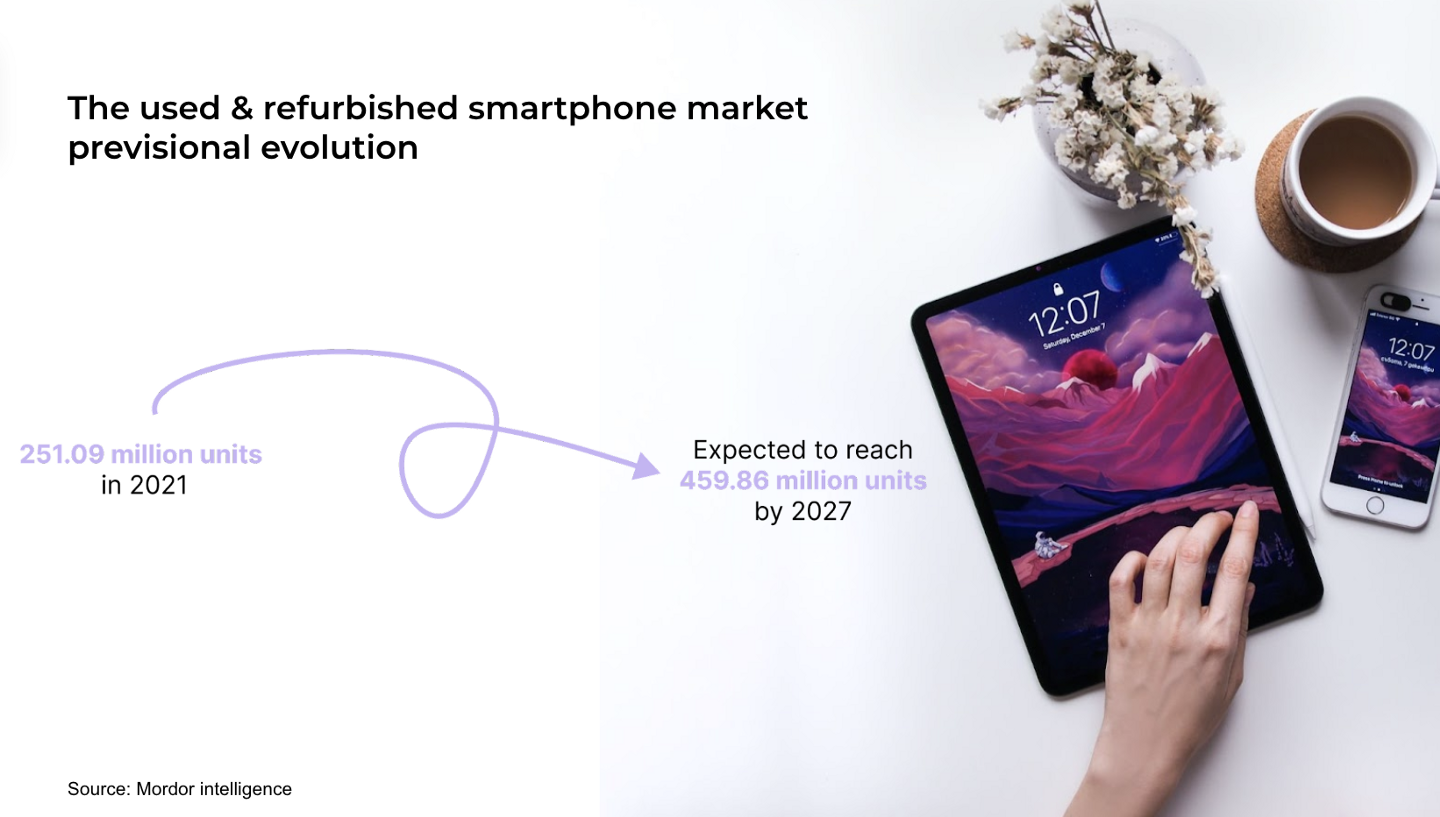
We found out that 251.09 million units of used and refurbished smartphones were sold in 2021, and would reach 459.89 millions units by 2027.
Meaning, the market is about to explode!
On the side of the competitors, the offers are very different from a platform to another. We noticed 3 main categories:

Professional providers: Only focus on professionals and businesses (e.g: Mobile club) and prefer long-term rental (12 months minimum).
Individual providers: Focus on individuals, usually propose long-term rental as well, but propose a purchase option at the end.
Suppliers: Samsung is actually suggesting a rental system for its brand-new devices, however you cannot purchase the device at the end.
With this quick overview, we understood what was available on the market and the opportunities, but what do the users want?
User purchases and consumption habits
User interviews & Survey
Getting to know and find our users was our next challenge. We thought we would launch a survey and interview some consumers of all generations.
We selected 5 people from different backgrounds and ages. Most of them would buy second-hand only for the price but would also take into account ecology.
For the survey, based on 108 respondents, we had very unexpected answers! Here is the key information:
58,5% have a maximum budget of €500 to spend on their devices.
72,3% would buy second-hand because of the competitive price.
35% never heard about rental services for electronics or household furnitures.
When digging deeper, we noticed that consumers of second-hand electronic were 92% positive about it. But in opposition, the main reason for non-second-hand and refurbished consumers to not purchase these devices is the lack of trust.

So to summarize, here are the main pain points we noticed from our user research:
Price: a new device is expensive, but a second-hand or refurbished as well.
Trust: Consumers do not know what to buy and where to buy. How to make sure they make the right choice?
Ecology: Facing the current ecological situation, how to make a decision aligned with these values.

Persona & Problem statement
Meet Alma
After all this research, we created Alma, our persona. Alma is an interesting persona in the way that she is well-balanced in everything. She is looking for a device after hers isn’t fully functional. However, she doesn’t want to spend too much in a new one, and is also concerned about ecological issues. However, second-hand is also pricey!

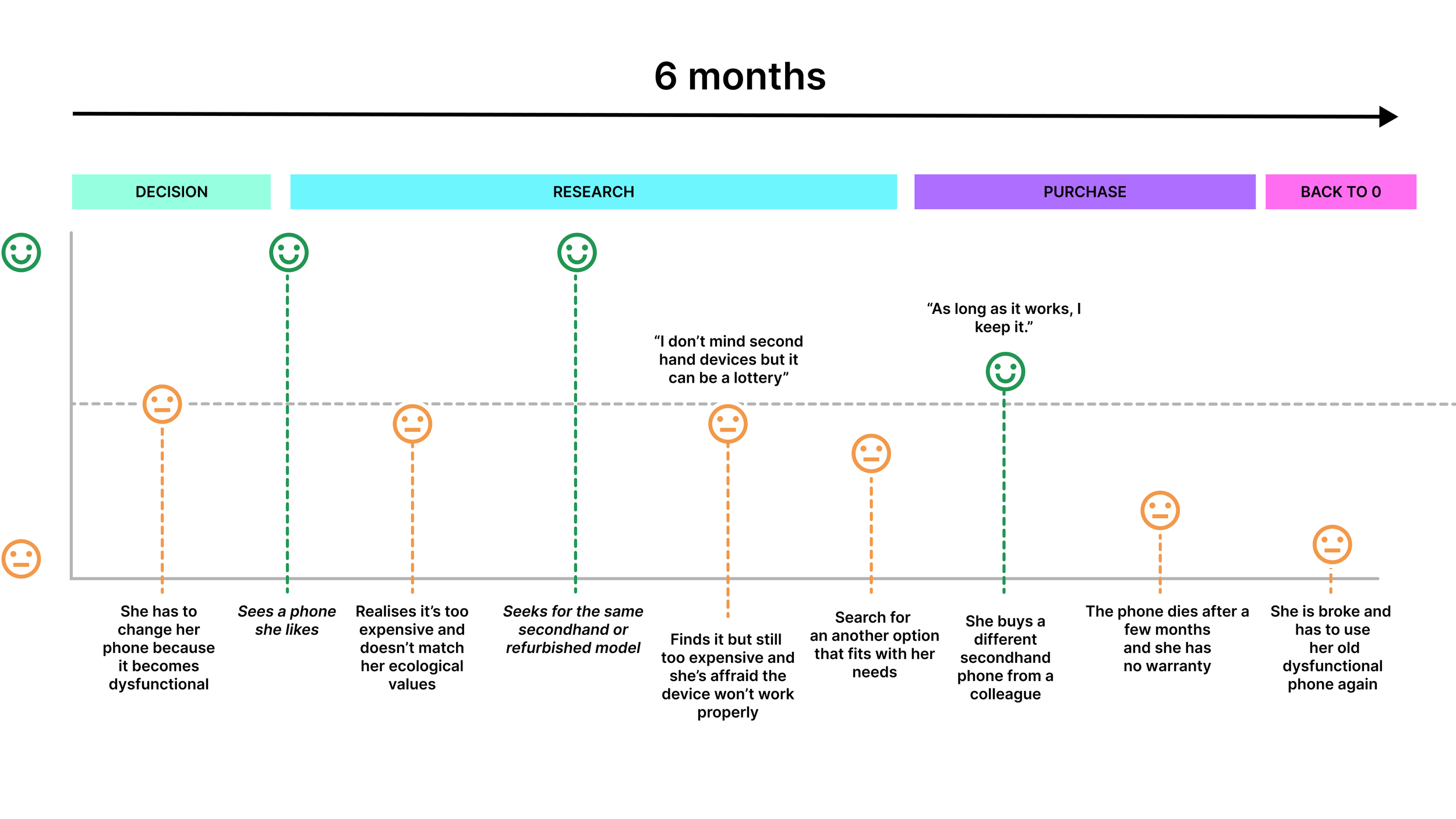
Problem statement
So how might we help Alma to enjoy up-to-date and fully working electronics in her budget and without making the wrong investment?
The concept
First, it was like that…
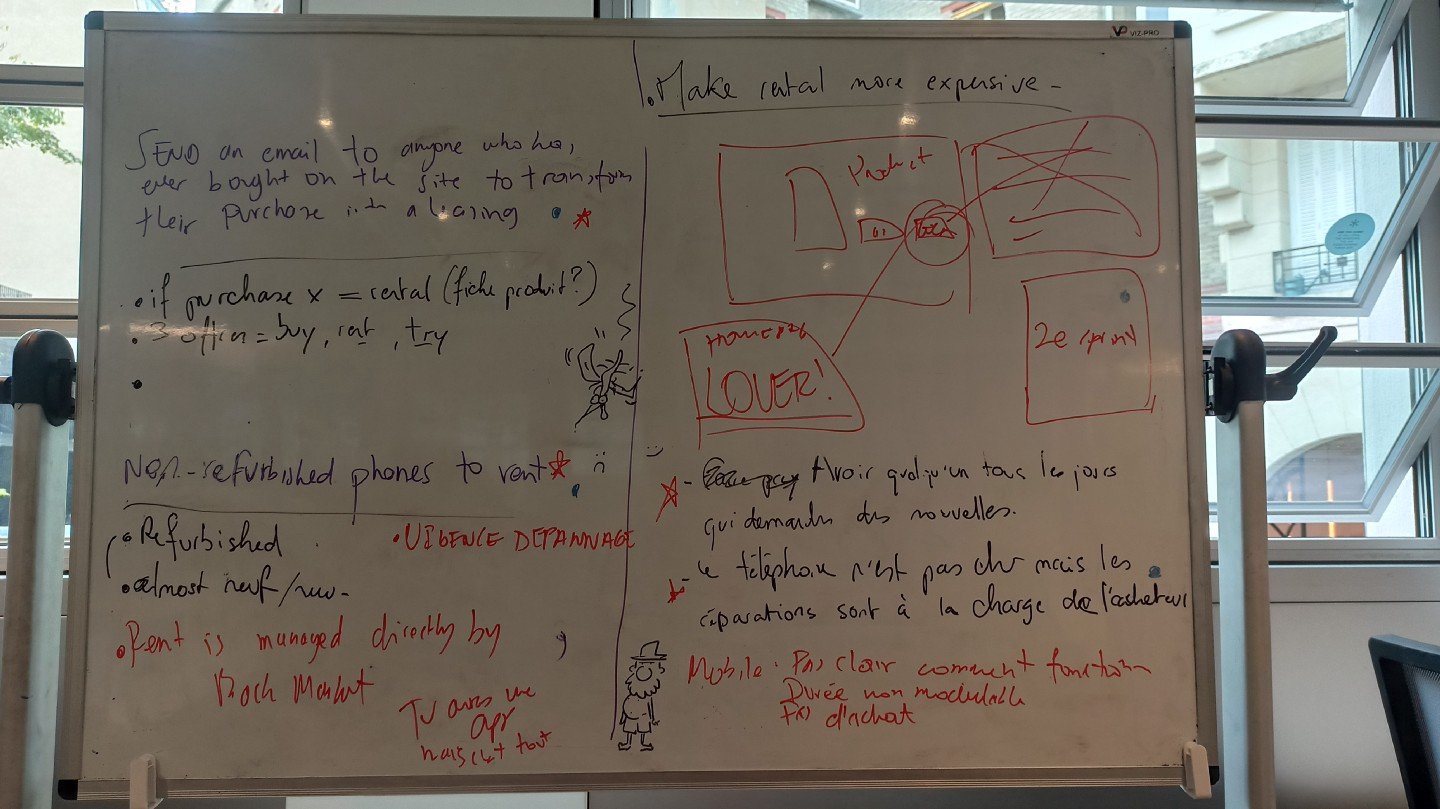
And it became this!

To answer these issues, here are the solutions we came out with:
Price: Rent as a way of financing a device. If the user decides to buy the device at the end of the rental, the price requested will be the one of the device minus the monthly fee already paid.
Trust: Try it before you buy it! “What if they try to sell me a broken item? And if it’s not what suits me?” By renting, the user can make sure the device fits their needs before considering a purchase.
Ecology: rental can quickly bring an end to over-consumption, since consumers can change devices every year. Since it wasn’t aligned with Back Market values, we want to limit rental to 6 months with a possibility to buy at the end.
Wireframes and Ideations
Sketch & concept testing
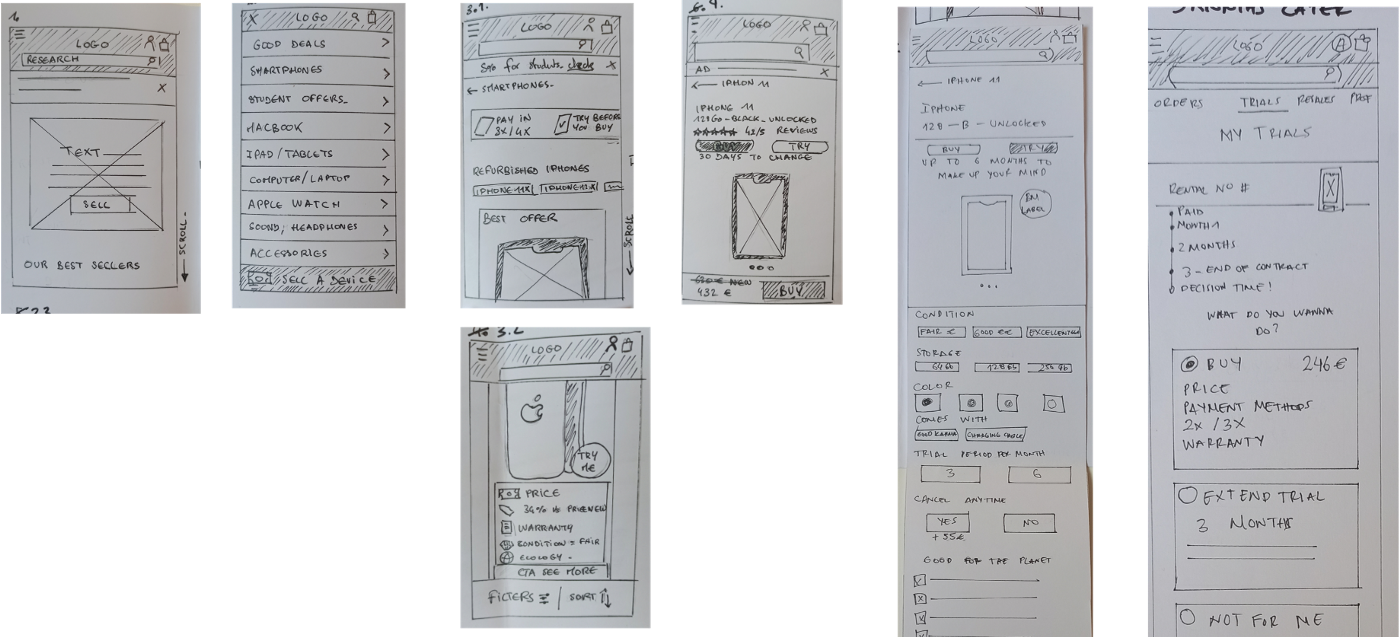
Once we had developed our sketch, the first step for us would be to test the concept on users. Our goal was to realise if users would go to the rental section by themselves, or if we had to lead them in that direction. Following the 7 concepts testing, here is what we understood:
The rental process arrives too late: Users seem to understand about rental at the product page, so after numerous steps.
Confusing wording — users understand you can try for free and do not associate the “try” to the “rental”. It’s also associated to short term rental.
When users see the rental: they are not interested or curious about it. Our survey showed that most users do not know about rental or even consider it. So we faced this situation here.
Lack of information: since there is a contract involved, users want to feel secure and get a maximum of information before subscription. Here, they didn’t feel convinced due to the lack of information, even if they are interested about the concept.
Mid-fi & Usability Testing
So before testing, we improved the mid-fi by:
Adding more information through the flow and including a landing page explaining the process.
More pop-up and promotional banners to invite the user to discover the offer.
Pushing the idea of “Rent it first, buy it after” by changing the wording and make it clear it’s a rental.
By the end of the usability testing, the users welcomed the concept. However, they didn’t feel informed enough about the offer after all!
We decided to slightly change the flow, by redirecting users to the landing page, in order for them to be informed straight away, instead of going through the classical menu.
Prototype
Here is the result of these two intense weeks of research and development. A whole new business model that answers the problem of price, trust and ecology.
Check out the prototype here ⬇️ ⬇️ ⬇️
For the next sprint
We were limited by time, but if the concept was real, and we wanted to improve it, here would be our main priorities:
Create all-in-one packages: the user would choose a pack with everything included, potentially the phone subscription, or else.
Improve information hierarchy: we still had some feedback that the rent it before you buy it concept was still understood too late. We would still need more time to improve information transmission.
Expand it to household appliances & other electronics: we decided to focus on electronic devices such as phones, laptops and tablets as they last for a shorter time (3 years on average Vs 10 years for household appliances). However, we had users sharing their interest in renting these items.
Rental for business: There are already plenty of competitors proposing refurbished devices to rent for Professionals. However, none of them proposes the concept of “Rent it before you buy it”.
Conclusion
I am delighted about this challenge. It was a very wide topic and a perfect example of the power of UX! How a concept that sounds so simple can become much more complex and targeted to a certain audience?
The topic was mostly researched; it did confirm my enthusiasm for UX and the intention of entering more deeply into this field. We felt very involved in developing the right concept for Back Market Users, and it was an excellent exercise for us to think about all aspects involved in the projects.
What a surprise to discover that our project was one of the top three best projects of the cohort! In conclusion, Back Market gave us the opportunity to present a final project that I can be proud of and would feel passionate to talk about.
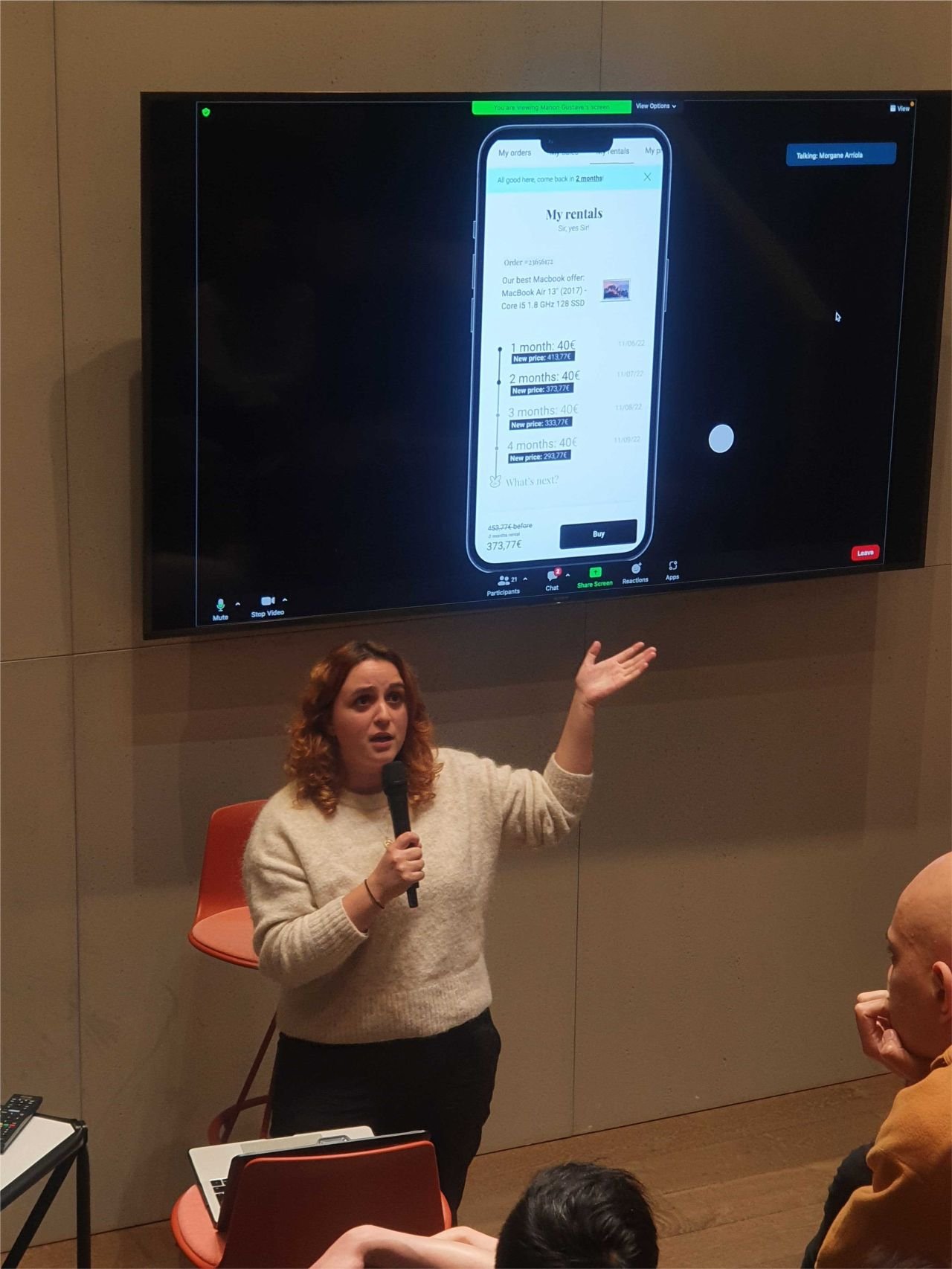
Presentation of the project during the Hack show of September 2022.
Thanks for reading!